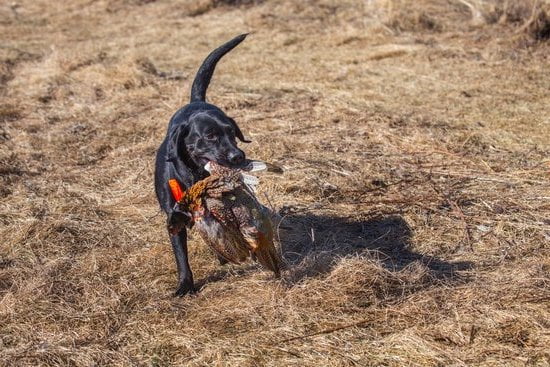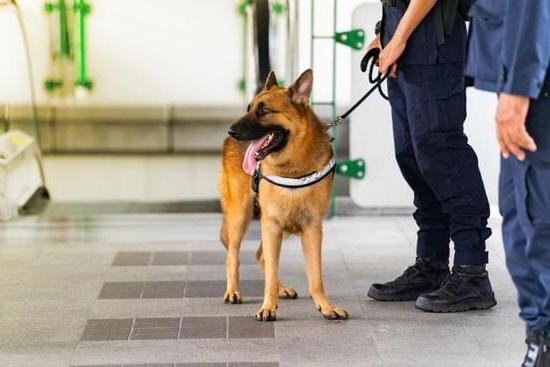Crate training is a popular and effective method for potty training dogs. Understanding how to potty train a dog crate can significantly accelerate the process of teaching your furry companion where and when to do their business. Crate training involves using a designated enclosed space, typically a crate or kennel, to help your dog learn bladder and bowel control.
By providing a safe and comfortable den-like environment, crate training helps dogs develop good behavior habits. It also prevents them from making messes in your home while you’re away or unable to supervise them. This section will delve into the fundamentals of crate training, including its benefits for potty training and how to select the right crate for your dog.
Furthermore, we will explore essential steps in preparing the crate for potty training, establishing a consistent schedule, using positive reinforcement techniques, handling accidents with cleaning and discipline strategies, transitioning from crate training to freedom gradually, troubleshooting common challenges that may arise during the process, ultimately leading up to celebrating success and maintaining consistency in your dog’s potty training journey.
Benefits of Crate Training for Potty Training
Crate training is a highly effective method for potty training your dog, providing numerous benefits for both you and your furry friend. By utilizing a crate as part of the training process, you can establish a safe and comfortable space for your dog while also helping them develop good habits when it comes to controlling their bladder and bowel movements. Here are some key advantages of using crate training for potty training:
- Teaches bladder control: Crate training helps dogs learn to hold their bladder until they are taken outside to eliminate, promoting better control over their bodily functions.
- Reduces accidents: By confining your dog in a crate when unsupervised, you can prevent accidents indoors and encourage them to only eliminate in designated areas outside.
- Aids in establishing routine: Using a crate as part of the potty training process helps create a consistent schedule for feeding, watering, and bathroom breaks, leading to quicker success in housebreaking.
Additionally, crate training can also serve as a valuable tool for managing other behaviors such as chewing, barking, or separation anxiety. When done correctly and with patience, this method can help set the foundation for a well-behaved and disciplined canine companion.
- Improved management of destructive behavior: Crates can be used to limit access to certain areas of the house where your dog may cause damage or engage in unwanted behaviors.
- Sense of security: Dogs often view their crate as a safe haven where they can rest and relax, which can help reduce stress and anxiety in various situations.
- Facilitates travel and vet visits: Properly crate trained dogs tend to adjust more easily to new environments, making trips to the vet or travel less stressful for both pet and owner.
Selecting the Right Crate for Your Dog
When it comes to potty training your dog using a crate, one of the crucial factors to consider is selecting the right crate for your furry friend. The crate serves as a safe and comfortable space for your dog while also aiding in the potty training process. Here are some important considerations when choosing a crate for your dog:
Size Matters
The size of the crate is essential in ensuring your dog’s comfort and success in potty training. The crate should be large enough for your dog to stand up, turn around, and lie down comfortably but not too big that they can use one end as a bathroom area. A crate that is too large may defeat the purpose of using it for potty training.
Material and Design
Consider the material and design of the crate based on your dog’s needs and behavior. For dogs who may chew or scratch, a durable material like metal might be more suitable compared to plastic crates. Similarly, some dogs may feel more secure in enclosed crates while others prefer open wire designs for better ventilation.
Accessibility and Portability
Choose a crate that is easily accessible for cleaning purposes and has features like removable trays or doors that make it convenient for you to take care of your dog’s space. Additionally, if you plan on traveling with your dog or moving the crate around frequently, opting for a portable and collapsible design can be beneficial.
By selecting the right crate tailored to your dog’s needs, you can set them up for successful potty training while providing them with a comfortable den-like environment they will enjoy spending time in. Remember that patience and consistency are key when incorporating the crate into your potty training routine.
Preparing the Crate for Potty Training
Choose the Right Size
When preparing the crate for potty training, it is crucial to select the appropriate size for your dog. The crate should be just big enough for your dog to comfortably stand up, turn around, and lie down. If the crate is too large, your dog may designate a corner as a bathroom area. This goes against the purpose of crate training for potty training.
Add Comfort Items
To make the crate a more inviting space for your pup, consider adding comfortable bedding such as blankets or towels. Dogs are more likely to view their crate positively if it feels cozy and secure. Additionally, you can place some of your dog’s favorite toys or treats inside the crate to encourage them to enter willingly.
Location Matters
Where you place the crate can impact the success of potty training. Choose a quiet and peaceful area in your home where your dog can feel safe and secure. Avoid placing the crate near drafty areas or in direct sunlight. The goal is to create a den-like environment that is conducive to successful potty training.
By following these tips on how to prepare the crate for potty training, you are setting both yourself and your furry friend up for success in the journey towards mastering this important skill. Remember that patience, consistency, and positive reinforcement are key elements in successfully potty training your dog using a crate.
Creating a Potty Training Schedule
When it comes to potty training a dog using a crate, establishing a regular schedule is crucial for success. Dogs thrive on routines and schedules, so setting specific times for food, water, bathroom breaks, and crate time can help them learn to go potty in the right place. You can start by taking your dog outside first thing in the morning, after meals, before bedtime, and at regular intervals throughout the day.
Consistency is key when creating a potty training schedule for your dog. By taking your dog out to eliminate at the same times every day, you are helping them establish good bathroom habits. Remember that young puppies have limited bladder control and will need more frequent bathroom breaks compared to adult dogs. Be patient and understanding during this process as accidents are bound to happen while they are learning.
In addition to regular bathroom breaks outside, it’s important to also schedule crate time for your dog. This will not only prevent accidents inside the house but also help them associate the crate as their safe space. Keep in mind that puppies typically need more frequent trips outside due to their small bladders. Over time and with consistent scheduling, your dog will learn when and where they should go potty.
| Key Point | Importance |
|---|---|
| Establishing Routine | Important for dogs to learn good bathroom habits |
| Consistency | Crucial in helping dogs understand where they should go potty |
| Crate Time | Helps dogs associate crate as safe space and prevents indoor accidents |
Positive Reinforcement Techniques for Crate Training
Crate training is an effective method for potty training your dog, and using positive reinforcement techniques can make the process smoother and more successful. Positive reinforcement involves rewarding your dog for good behavior, such as going to the bathroom outside the crate or holding it until they are let out. Here are some tips on how to use positive reinforcement to help potty train your dog in their crate:
- Use treats: When your dog successfully goes potty outside of the crate, be sure to reward them with a tasty treat. This will help reinforce the good behavior and encourage them to repeat it in the future.
- Praise and affection: Along with treats, giving your dog verbal praise or pets can also reinforce their good behavior. Dogs love to please their owners, so hearing that they did a good job will motivate them to continue practicing proper potty habits.
- Consistency is key: Make sure you are consistent with your rewards each time your dog goes potty in the right place. This will help them understand what is expected of them and make the connection between good behavior and positive outcomes.
In addition to using positive reinforcement, it’s important to avoid punishment or negative reactions when accidents happen during crate training. Dogs may not understand why they are being scolded after the fact, so it’s best to focus on rewarding and encouraging the desired behavior instead.
Remember that every dog is different, so it may take some time and patience to find the right positive reinforcement techniques that work for your furry friend. By staying consistent with rewards and providing a loving environment for learning, you can effectively potty train your dog using crate training methods while strengthening your bond with them at the same time.
Dealing With Accidents
Accidents are bound to happen during the potty training process, especially when you are teaching your dog to use a crate. It is essential to approach these situations with patience and understanding while maintaining consistency in your training methods. When accidents occur, it is crucial to clean up the mess promptly and effectively to prevent any lingering odors that may attract your dog back to the same spot.
When cleaning up accidents in the crate, be sure to use an enzymatic cleaner specifically designed for pet messes. These cleaners are effective at breaking down odors and eliminating any traces of urine or feces that may remain. Avoid using ammonia-based cleaners, as they can actually attract dogs back to the same spot due to the scent similarity between urine and ammonia.
In addition to thorough cleaning, it is important to address the accident from a disciplinary standpoint. While it is crucial not to scold or punish your dog for accidents that occur during potty training, it is essential to redirect their behavior positively.
If you catch your dog in the act of having an accident in the crate, calmly but firmly interrupt them and take them outside immediately. By consistently reinforcing proper potty behavior outside of the crate, you can help your dog understand where they should go potty and minimize accidents in the future.
Transitioning From Crate Training to Freedom
Once your dog has successfully mastered potty training through crate training, it’s time to slowly transition them from being confined to the crate to having more freedom in the house. This process requires a gradual approach to ensure that your dog continues to exhibit good potty behavior even when they are no longer in the crate.
Start by allowing your dog out of the crate for short periods under supervision. Pay close attention to their behavior and body language, as they may show signs of needing to go potty. It’s important to take them outside immediately if you notice these signs, and praise them lavishly when they do their business outside. Gradually increase the amount of time your dog spends out of the crate each day, while still adhering to a consistent potty schedule.
As your dog demonstrates reliable potty training habits outside the crate, you can start giving them more freedom indoors. Keep a close eye on them during this transition period and be ready to intervene if needed. If accidents do occur, it’s crucial not to scold or punish your dog, as this can set back their progress in potty training. Instead, reinforce positive behavior by rewarding them when they go potty in the designated spot.
By following a gradual approach and providing consistent positive reinforcement, you can successfully transition your dog from crate training to having more freedom in the house. Remember that patience and consistency are key when it comes to potty training your furry friend. With time and effort, your dog will learn good potty habits that will last a lifetime.
Troubleshooting Common Potty Training Challenges
As much as we wish that potty training our furry friends would be a smooth process, challenges are bound to arise along the way. It’s important to remember that each dog is unique and may require different approaches when it comes to crate training for potty training. Here are some common challenges you may encounter and how to overcome them in your journey of learning how to potty train a dog crate:
One common challenge many pet owners face is resistance from their dog when it comes to going into the crate. This can be due to anxiety, fear, or simply not being used to being confined in a small space. To address this challenge, it’s crucial to make the crate a positive and inviting space for your dog.
You can do so by gradually introducing your dog to the crate with treats, toys, and comfortable bedding inside. Positive association with the crate will help your dog feel more comfortable and willing to enter.
Another challenge pet owners often face is excessive whining or barking from their dog while inside the crate. This behavior can stem from feelings of loneliness or boredom. To tackle this challenge, ensure that your dog has had enough exercise and mental stimulation before going into the crate.
Providing interactive toys or puzzles inside the crate can also help keep your dog occupied and distracted during their time in confinement. Consistency in ignoring whining or barking (as long as it’s not due to an urgent need) will teach your dog that such behaviors will not result in attention or release from the crate.
Finally, accidents inside the crate can be a frustrating setback in potty training efforts. It’s essential to remain patient and avoid punishing your dog for accidents, as this may lead to fear or anxiety around using the crate for potty needs.
Instead, thoroughly clean any messes with an enzymatic cleaner to eliminate odors that could attract your dog back to that spot for elimination. Reassessing your potty training schedule and ensuring regular bathroom breaks are maintained can also help prevent accidents in the future.
By understanding these common challenges and implementing strategies to address them effectively, you’ll be better equipped to navigate through the ups and downs of potty training using a crate method with your beloved canine companion. Remember that consistency, patience, and positive reinforcement are key factors in successfully teaching your dog where and when it’s appropriate to relieve themselves while using a crate for training purposes.
Conclusion
In conclusion, successfully potty training a dog using a crate involves patience, consistency, and positive reinforcement. Understanding the basics of crate training is essential to setting up a solid foundation for your furry friend’s potty training journey. By selecting the right crate, preparing it properly, and creating a schedule for bathroom breaks, you are on your way to success.
Positive reinforcement techniques play a crucial role in crate training. Rewarding good behavior and ignoring accidents can help your dog understand what is expected of them. Dealing with accidents may happen along the way, but staying calm and cleaning up promptly is key to maintaining a positive training environment. Discipline should be implemented carefully and consistently to avoid confusion for your dog.
As you transition from crate training to allowing your dog more freedom in the house, remember to maintain consistency in their routine. Troubleshooting common challenges that may arise during the potty training process will require patience and perseverance. Remember that each dog is unique and may progress at their own pace.
By celebrating every small success along the way, you are not only reinforcing good behavior but also strengthening the bond between you and your furry companion. Following these guidelines on how to potty train a dog crate will ultimately lead to a successful potty training experience for both you and your beloved pet.
Frequently Asked Questions
Can You Use a Dog Crate for Potty Training?
Using a dog crate for potty training can be very effective. It helps establish a routine, teaches bladder control, and creates a safe space for the dog to rest. However, it’s important to not leave the dog in the crate for too long.
How Long Do You Leave a Dog in a Crate for Potty Training?
The length of time you should leave a dog in a crate for potty training depends on the age and breed of the dog. Generally, puppies can hold their bladder for one hour per month of age, while adult dogs can hold it for up to 8 hours. However, frequent breaks are essential.
How Do You Crate Train a Dog to Housebreak?
Crate training a dog to housebreak involves creating positive associations with the crate, providing food and water inside it, making it cozy with bedding, and gradually increasing the time spent inside. It’s crucial to avoid using the crate as punishment and always reward good behavior. Consistency is key in this process.

Welcome to the blog! I am a professional dog trainer and have been working with dogs for many years. In this blog, I will be discussing various topics related to dog training, including tips, tricks, and advice. I hope you find this information helpful and informative. Thanks for reading!





